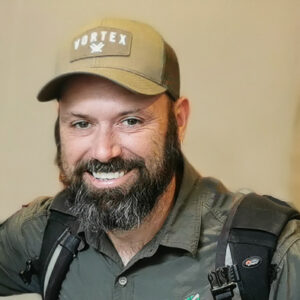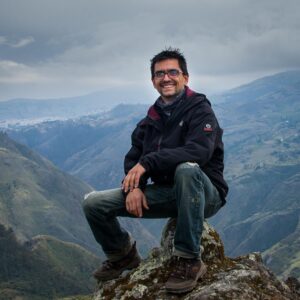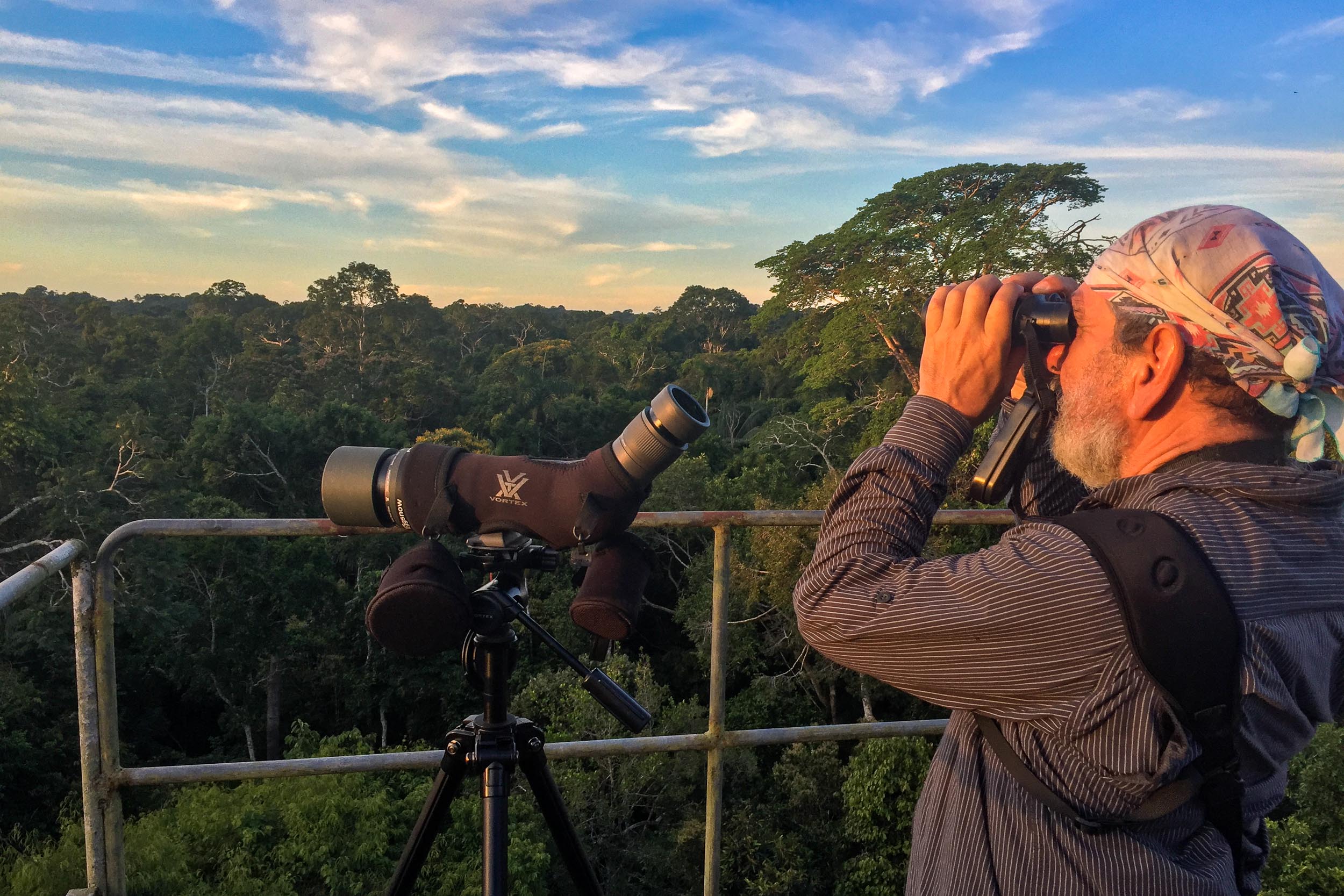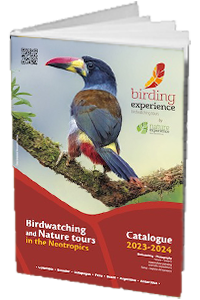Your travel expert
Xavier Amigo
Responsible for naturalist, botanical and ornithological travel. Responsible of fixing and professional contact.

The landscapes of the enchanted archipelago are most fascinating, as is the fauna that inhabits it. All these varied, unusual and mimetic creatures combine in a panel of black, grey, ochre and green matisses, giving the monochrome and placid scenery a few touches of movement. These surrealistic landscapes call for a deep insight into an unstable geological and biological past. Indifferent to humans, the animals reign here as masters of the place, easy to encounter and photograph, but being in the right place at the right time is important. Follow our photographer guide, a great connoisseur of the area, to make sure you don't miss anything of this subjugating beauty. Special disembarkation times, early in the morning, will allow you to get the best shots of landscapes, portraits and the most extravagant behaviours of this antediluvian fauna.

Arrival at Mariscal Sucre International Airport in the Ecuadorian capital at the end of the day. Welcome, transfer and short briefing on the upcoming trip. Depending on the flight schedule we will be able to stroll around our hotel grounds to enjoy the facilities but also some of the typical bird species of the inter-Andean valley including a large number of hummingbirds such as the common Sparkling Violetear, the impressive Black Trainbearer, the colossal Giant Hummingbird and the Western Emerald . Dinner and overnight in a standard hotel in the inter-Andean valley near the airport.
Private transfer, bilingual assistance
Morning transfer from your hotel to Quito National Airport, accompanied by one of our assistants, for your flight to the Galapagos Archipelago. Upon arrival at Puerto Baquerizo, the main port of San Cristobal, a health and environmental inspection is carried out to protect these fragile ecosystems from exogenous intrusion. Your naturalist guide will be waiting for you at the airport. You will go with him to the pier where your yacht is anchored. You will be welcomed on board by the entire crew and the captain, who will give you a quick preparatory meeting and help you to get to your cabins and familiarise yourself with the different areas of the ship. In the afternoon, we will explore Cerro Tijeretas, where we will be able to observe a spectacular panoramic landscape, as well as our first Opuntia forests, where mockingbirds, geospizes and large colonies of frigate birds can be found. This will also be the moment to introduce the different geological concepts that have shaped the archipelago and of course talk about Charles Darwin's first landing in the Galapagos.
Bilingual English and Spanish speaking naturalist guide
The geographical isolation of Española has led to the appearance of several endemic species. Located on the most arid sectors of the lowlands of the island, the cone-billed geospizers and the Española mockingbird are relatively easy to detect. They occupy the majority of the island and the two most visited sites, Bahia Gardner and Punta Suarez. The latter is the best known and most popular site to enjoy the parades and aerial comings and goings of the majestic Galapagos albatross, but Bahia Gardner is home to almost the entire colony of this impressive seabird. The extremely complex parades remain the most sensational of all the birds in the archipelago. From the cliffs of the south coast, take a moment as a spectator, to admire the ease of their gliding flight over the sea and the take-off and landing of the adults. Keep your eyes open for the endemic land tortoise. The latter is a real miracle as the population has grown from 14 survivors in 1960 to over 2000 individuals. In the afternoon you will go to a snorkeling site for an aquatic walk in the company of schools of royal damselfish, humpback parrotfish and Galapagos surgeons. But the star of the show is of course the marine iguana, whose multicoloured livery attracts the attention of all visitors.
Bilingual English and Spanish speaking naturalist guide
Floreana is the southernmost island of the archipelago. The vast majority of boats that cruise here stop around the Champion Islets to explore its extremely rich seabed and to do a panga-ride. Look through binoculars for the giant opuntia cactus, on which the Floreana mockingbird likes to perch. Unfortunately, there are only 120 pairs of this endemic species left. In Puerto Velasco Ibarra, the island's main port, you will dock to visit the highlands and discover one of the most enigmatic parts of the archipelago's human history. It is also here that another endangered species inhabits the scalesia rainforests of the Asilo de la Paz, the modest geospize. The Asilo de la Paz is also the breeding ground for several species of giant tortoises. During the sea crossing to the north, we will complete the day of observation with the search for pelagic birds such as the Cape Checkerspot, Galapagos Petrel, Galapagos Shearwater, Elliot's Storm-Petrel, but also cetaceans.
Bilingual English and Spanish speaking naturalist guide
We will disembark this morning in Puerto Ayora, to visit the Arnaldo Tupiza land tortoise breeding centre, located inside the Galapagos National Park facilities, to discover the different conservation processes that have been put into practice since the 1970s. We will then go by private bus to the highlands of Santa Cruz to look for species typical of different ecosystems, between original vegetation covers, agricultural areas and ecotones. In the highlands, around the two collapsed craters known as "Los gemelos", we will often come across the carefree steps of a few Galapagos Doves and the curious Woodpecker Geospizel, the only representative of this family that uses tools to feed, the Galapagos Flycatcher is another endemic of the archipelago. We will also take a moment around the secondary forests of Rancho Primicia to observe numerous giant tortoises in their natural environment, which stoically graze the lawns along the paths or come to refresh themselves in the muddy pools of water.
Bilingual English and Spanish speaking naturalist guide
Cerro Dragon, located on the northwestern coast of Santa Cruz Island, is an excellent place to relax and break the pace of the trip. Its location in the centre of the main island chain makes it a place rich in marine life. It is common to encounter congregations of green sea turtles, large tropical and subtropical reef fish, reef sharks and rays. Occasionally large pods of blow dolphins swim through the area. After a wet landing, you will head to a hyper-saline lagoon for the observation of several shorebirds and anatidae such as the American Stilt, Bahamian Duck and several groups of Caribbean Flamingos. On the upper part of the hill, a large colony of Land Iguanas nest, reintroduced here during a project carried out by the Galapagos National Park. In the afternoon we will be introduced to the geology and volcanic history of the Galapagos, with a visit to Sombrero Chino. This cone-shaped island consists of lava tunnels, interlocking craters and pa-hoe-hoe lava. The 400-metre trail leads to the upper part of the island, for an excellent view of this part of the archipelago. Ideal conditions to feel the volcanic origin of the archipelago. Depending on the time of year, a few Galapagos penguins sometimes search the waters of this islet for food. Return on board.
Bilingual English and Spanish speaking naturalist guide
Genovesa Island, in the north-west of the archipelago, is essentially made up of the remains of a huge crater, now largely submerged. Nicknamed "Bird Island", its reputation is well deserved. On the coral sands of Darwin Bay, many species nest on the ground or in the scrub. Along the trails, you can also see many of the island's endemics. A panga ride along the cliffs of the submerged volcano will allow you to see the amazing gliding seabirds and, in particular, the Red-billed Tropicbird, which plays in the wind currents created by the cliffs. Walking along the cliff path, you can see many species of pelagic and semi-pelagic birds, as well as 4 of the 14 species of Darwin's finches. In the afternoon, a visit to El Barranco will allow us to learn about the geological and volcanic past of the archipelago, through the prism of the numerous "pa-hoe-hoe" lava fields. Large colonies of pelagic birds and in particular the Red-footed Booby breed successfully here. Grant's boobies and Galapagos Shearwaters, as well as two species of Frigatebirds, are on display for visitors to enjoy. At Prince Philip Strairs, located at the southern tip of the island, several colonies of Storm-petrels nest in the lava tunnels and it is quite common to observe the predatory behaviour of the Short-eared Owl, which hunts birds in the nests by day. Return to the ship.
Bilingual English and Spanish speaking naturalist guide
In the early morning the boat will head for Las Bachas beach, north of Santa Cruz Island. This site is one of the most important breeding grounds for green turtles (Chelonia mydas) in the archipelago. The coral beach is also home to several species of shorebirds and sometimes the endemic Caribbean Flamingo subspecies. In the middle of the morning Blue-footed Boobies, Brown Noddies, Galapagos Shearwaters and Magnificent Frigate birds will accompany us on a short sea crossing to the mangroves of Black Turtle cove. This bay is made up of mangrove trees where it is possible to observe Lava Herons and Brown Pelicans. Another snorkeling session will allow us to swim with sea turtles, rays and white tip sharks, don't worry they are harmless.
Bilingual English and Spanish speaking naturalist guide
From Isabela Island, we will land at Tagus Cove, a well-sheltered former privateer's anchorage. The trail leads to Darwin Lagoon, a collapsed volcanic chamber filled with fresh water. The surrounding vegetation is home to several species of finch. A zodiac ride will take you close to the cliffs where the rare Dark Swallow nests and several colonies of marine iguanas and sea lions. A little further south on the island of Isabela, the bay of Urbina is located at the foot of the Alcedo volcano, from where we can observe large colonies of marine iguanas. This arid coastal area, where large stretches of coral are found, is one of the best sites for observing the curious and endemic Flightless Cormorant. Back on board in the middle of the afternoon for another snorkelling session.
Bilingual English and Spanish speaking naturalist guide
This morning the boat will wake up facing one of the iconic sites on Isabela Island. Cape Vicente Roca is a Tuff cone that is home to large colonies of Galapagos Penguins. Underwater, the rich and colourful walls attract large numbers of feeding sea turtles. A sail along the Bolivar Channel will allow us to observe the possible pelagic birds that come here to fish. If the captain allows it, we will approach the beach of Tortuga Negra, in order to try to see the Mangrove Finch, one of the rarest birds of the archipelago. In the afternoon we will head for Fernandina. This island is the youngest of all the islands of the archipelago. This is probably why its main volcano is also one of the most active in the world. The numerous eruptions and perpetual lava flows have changed and shaped the relief and appearance of this island. We disembark at Punta Espinoza, a rocky coastline lined with mangroves that is home to Galapagos Penguins and Flightless Cormorants.
Bilingual English and Spanish speaking naturalist guide
This morning we will anchor in front of James Bay. The long black sandy beaches, fringed by mangroves, are located a little east of Puerto Egas. Behind the beach are two brackish water lagoons, where several species of birds reside: Flamingos, American Stilts, Bahamian Ducks, Galapagos Buzzards, and also a huge colony of marine iguanas. The great interest of this site is the presence of two species of sea lions. One colonizes the sandy beaches and the other the rocky volcanic coasts. After lunch, we will anchor in front of Playa Espumillas. This beautiful beach of golden sand, fringed by mangroves, is located in James Bay. Behind the beach, there is a brackish water lagoon which the path overhangs through a scented wood forest. You can walk freely to explore this new site or simply lie on the sand to enjoy a moment of relaxation and probably come across some green turtles.
Bilingual English and Spanish speaking naturalist guide
After approaching the northern coast of Santa Cruz, we will head for Seymour Island. Blue-footed Boobies, Brown Noddys, Galapagos Shearwaters and Magnificent Frigatebirds will accompany you during these last hours at sea. Seymour Island is home to a large colony of Sea Lions, both species of Frigatebirds and the wonderful Swallow-tailed Gull, the only nocturnal gull in the world. The short trail will also allow you to explore vegetation consisting of Palo Santo and Opuntia cactus. Back on board mid-morning to collect our belongings and head to Baltra airport for our flight to the mainland. Transfer at your own expense to the international terminal of Guayaquil airport for your return flight.
You want a personalized departure date? Contact us. Request a personalized date
| Itinerary | Price lower deck | Price upper deck |
|---|---|---|
| Itinerary | 6,395 US$ | 6,395 US$ |
You are a group of travelers and want a special rate? Contact us. Request a personalized quote
To book your tour, please confirm your agreement in writing to your local agent.
The agency declines all responsibility for the execution of the confirmed services in the event of non-compliance with the above payment terms.
The rates quoted here are based on payment to our US account only.
All cancellations must be made by email to the local agency. Cancellation costs are to be paid by the client. If the client has a cancellation insurance policy, he/she will have to pay these costs and take the necessary steps to declare the cancellation according to the terms of the contract to the insurer, who will take care of the eventual reimbursement.
The cancellation conditions for the cruise are as follows:
Changes to the itinerary may occur as a result of natural disasters or changes in domestic legislation. The visitor must take into account and accept the possibility of last minute changes in the organisation of the trip. The operator therefore reserves the right to make any changes necessary to ensure the safety and integrity of the travellers and to comply with the laws in force. The hotels are given as an indication subject to availability at the time of booking the tour. In case of unavailability, a hotel of the same category will be proposed.
Formalities: Passport valid 6 months after your return date. No visa is required at this time. Your health insurance (private or public) is mandatory to enter Ecuador.
Vaccinations: Although no vaccinations are compulsory, we advise you to consider vaccinations against tetanus, yellow fever and hepatitis A and B as essential.
We recommend that you consult your doctor before departure and that you take out insurance to cover medical expenses and repatriation.
Concerning parasitic diseases transmitted by mosquito bites (such as malaria, dengue fever, Chikungunya) please note that Quito, the centre of the country and the Galapagos are not affected. Furthermore, the majority of the country's risk areas are not located in the areas we visit on our tours.
* In US dollars based on 15 participants in a double room/cabin. These rates are valid for the dates selected but may be subject to increase at the time of booking and depending on the tourist season and local holidays. Our quotations are calculated in US Dollars and we are committed to this amount. The equivalent value in Euros or in any other currency is therefore indicative and calculated on the basis of the exchange rate on the day of the offer. The value of the extensions are calculated on the basis of 15 participants.
**Flight prices are indicative and may change depending on the date of confirmation. The purchase of the tickets will have to be done by the ship owner for the whole group (15pax)
Photo credits: Xavier Amigo, Dusan Brinkhuizen, Pierre Ferron, Vincent Mouret.









The Monserrat boat proudly bears the name of the Virgin of Montserrat, patron saint of Catalonia in Spain. For centuries, seafarers around the world have adopted her as their faithful companion and venerated her as their protector throughout their voyages.
With its personal service and attention to detail, Monserrat Galapagos Expeditions has created the perfect setting for an unforgettable experience in the enchanted islands.
Category |
First class |
|---|---|
Length |
27 m - 88 ft |
Beam |
11 m - 36 ft |
Speed |
10 Knots |
Capacity |
16 Passengers |
Crew |
9 + Guides |
Cabins |
10 Cabins |
Travel theme |
Special photo cruise to the Galapagos Islands, naturalist and ornithological observations |
|---|---|
Accompaniment |
Bilingual naturalist guide |
Group |
16 adults |
Arrival city |
Quito or Guayaquil |
Departure city |
Quito or Guayaquil |
Accommodation |
Cruise and standard or superior hotels |
Physical condition |
Low to moderate |

